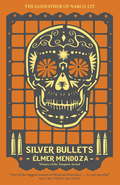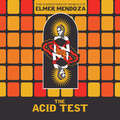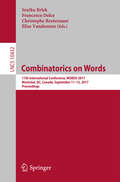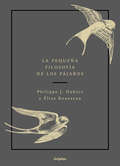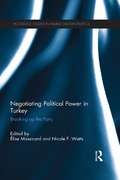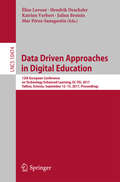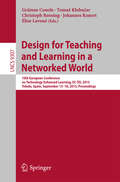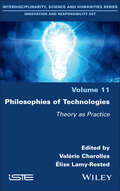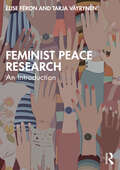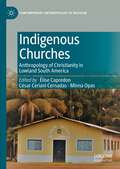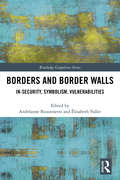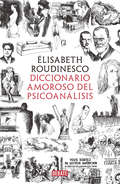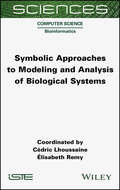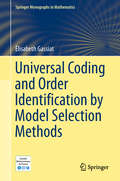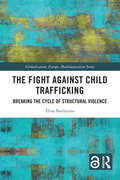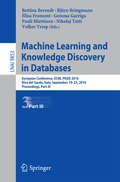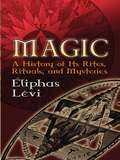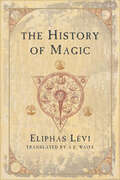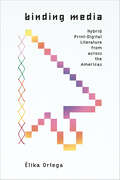- Table View
- List View
Silver Bullets
by Élmer MendozaTormented by past heartbreak and contemporary politics, for Edgar 'Lefty' Mendieta the news of the murder of lawyer Bruno Canizales represents just another day at the office in the drug-ridden city of Culiacán. It soon becomes clear that there is no shortage of suspects in a city where it's hard to tell the gangsters from the politicians. Canizales was the son of a former government minister and the partner of a drug baron's daughter, with his own penchant for cross-dressing and dangerous sex. What is less clear is why the assassin chose to use a silver bullet. And why, two days later, they seem to have struck again. In this sweltering city where a desire for the truth can be as dangerous as any drug, Mendieta's search for justice takes him from mansions to drug dens, in Élmer Mendoza's seminal founding text of Latin America's 'narco-lit' wave.
Silver Bullets
by Élmer MendozaTormented by past heartbreak and contemporary politics, for Edgar 'Lefty' Mendieta the news of the murder of lawyer Bruno Canizales represents just another day at the office in the drug-ridden city of Culiacán. It soon becomes clear that there is no shortage of suspects in a city where it's hard to tell the gangsters from the politicians. Canizales was the son of a former government minister and the partner of a drug baron's daughter, with his own penchant for cross-dressing and dangerous sex. What is less clear is why the assassin chose to use a silver bullet. And why, two days later, they seem to have struck again. In this sweltering city where a desire for the truth can be as dangerous as any drug, Mendieta's search for justice takes him from mansions to drug dens, in Élmer Mendoza's seminal founding text of Latin America's 'narco-lit' wave.
The Acid Test
by Élmer MendozaEgdar "Lefty" Mendieta investigates the death of a notorious stripper in this second sweltering "Narco-lit" noir from the Godfather of Mexican crime fictionAn intelligent, atmospheric police procedural series for fans of John Le Carré and Mick HeronWhen the mutilated body of Mayra Cabral de Melo is found in a dusty field, Detective Edgar "Lefty" Mendieta has personal reasons for bringing the culprit to justice. Mayra, a well-known stripper, had no shortage of ardent, deluded and downright dangerous admirers, and Lefty himself is haunted by the night he spent in her company.As Mexico's drug war ramps up, Lefty's pursuit of a gallery of jealous and powerful suspects, all with a murderous glint in their eye, leads him to Samantha Valdés, the godfather's daughter, who is battling to retain her father's empire. And as the mystery deepens, the bodycount rises.
The Acid Test
by Élmer MendozaEgdar "Lefty" Mendieta investigates the death of a notorious stripper in this second sweltering "Narco-lit" noir from the Godfather of Mexican crime fictionAn intelligent, atmospheric police procedural series for fans of John Le Carré and Mick HeronWhen the mutilated body of Mayra Cabral de Melo is found in a dusty field, Detective Edgar "Lefty" Mendieta has personal reasons for bringing the culprit to justice. Mayra, a well-known stripper, had no shortage of ardent, deluded and downright dangerous admirers, and Lefty himself is haunted by the night he spent in her company.As Mexico's drug war ramps up, Lefty's pursuit of a gallery of jealous and powerful suspects, all with a murderous glint in their eye, leads him to Samantha Valdés, the godfather's daughter, who is battling to retain her father's empire. And as the mystery deepens, the bodycount rises.
The Acid Test
by Élmer MendozaWhen the mutilated body of Mayra Cabral de Melo, a well-known stripper, is found by the side of a dusty road, detective Edgar "Lefty" Mendieta has personal reasons for bringing the culprit to justice. Mayra had no shortage of ardent, deluded and downright dangerous admirers, and Lefty himself is haunted by one steamy night he spent in her generous company. So begins an investigation that will bring him ever closer to the murderous world of the narcos, who are waging a war of bloody attrition against the Mexican state. The country is a powder keg, waiting for a spark, and Mendieta is about to enter the darkest days of his life. Corrupt politicians, failed boxers and unscrupulous arms dealers all lie in wait across the path to justice - none of which can prepare him for a brush with the F.B.I. when the father of the President of the United States is attacked on vacation. But for all these perils it is the weight of his own murky past that Lefty finds hardest to bear.And as he scratches around for clues, faced with a gallery of suspects who all have a motive and that murderous glint in their eye, the reappearance of Samantha Valdés, now the boss of the Cartel del Pacífico, adds one more piece to an already impenetrable puzzle.(P)2016 WF Howes Ltd
Combinatorics on Words: 11th International Conference, WORDS 2017, Montréal, QC, Canada, September 11-15, 2017, Proceedings (Lecture Notes in Computer Science #10432)
by Christophe Reutenauer Srečko Brlek Francesco Dolce Élise VandommeThe two parts of this text are based on two series of lectures delivered by Jean Berstel and Christophe Reutenauer in March 2007 at the Centre de Recherches Mathematiques, Montreal, Canada. Part I represents the first modern and comprehensive exposition of the theory of Christoffel words. Part II presents numerous combinatorial and algorithmic aspects of repetition-free words stemming from the work of Axel Thue--a pioneer in the theory of combinatorics on words. A beginner to the theory of combinatorics on words will be motivated by the numerous examples, and the large variety of exercises, which make the book unique at this level of exposition. The clean and streamlined exposition and the extensive bibliography will also be appreciated. After reading this book, beginners should be ready to read modern research papers in this rapidly growing field and contribute their own research to its development. Experienced readers will be interested in the finitary approach to Sturmian words that Christoffel words offer, as well as the novel geometric and algebraic approach chosen for their exposition. They will also appreciate the historical presentation of the Thue-Morse word and its applications, and the novel results on Abelian repetition-free words.
La pequeña filosofía de los pájaros
by Élise Rousseau Philippe J. Dubois22 lecciones de serenidad inspiradas en los pájaros. A menudo aprendemos de aquello que menos esperamos. Precisamente, este es el secreto que nos confía este libro. En un momento como el actual, en el que vivimos continuamente conectados al reloj o a una pantalla, estas 22 lecciones breves e inspiradoras nos enseñan a observar lo que nos rodea, pero también a reconectar con la naturaleza que sigue allí, esperándonos. ¿Y qué mejor que detener por un instante el ritmo infernal de nuestras vidas para captar lo que nos dicen los pájaros? Observando cómo estos pequeños (aunque grandes) maestros viven y están en el mundo, nosotros podemos enfocar la vida de otra manera para detenernos y reencontrarnos con nuestra verdadera esencia. Nunca es tarde, solo hace falta escuchar.
Negotiating Political Power in Turkey: Breaking up the Party (Routledge Studies in Middle Eastern Politics)
by Élise Massicard Nicole F. WattsThis edited collection looks at how political parties in Turkey actually work, inside and out. Departing from traditional macro-level analyses, the book offers a new sociological approach to the study of political parties, treating them as non-unitary entities composed of many different groups and individuals who both cooperate and compete with one another. The central proposition of the book is that parties must be studied as clusters of relationships in specific locales rather than as unitary ‘black boxes.’ This ground-up approach provides new insights into the internal workings of political parties; why parties gain and lose elections and other political resources; and the ways in which power is negotiated and exercised in Turkey and beyond. Chapters include studies of Islamic and Islamist parties from the 1970s to the present, ethnic Kurdish parties, center- and extreme right parties, and the far left, as well as independent candidates. The authors pay particular attention to relations – and the blurry boundaries-- between parties and civil society groups, religious associations, non-governmental organizations, ethnic and socio-economic groups, and state institutions, and to the variability of external and internal party politics in different geographies such as Adana, Mersin, and Diyarbakir.
Data Driven Approaches in Digital Education: 12th European Conference on Technology Enhanced Learning, EC-TEL 2017, Tallinn, Estonia, September 12–15, 2017, Proceedings (Lecture Notes in Computer Science #10474)
by Katrien Verbert Hendrik Drachsler Élise Lavoué Mar Pérez-Sanagustín Julien BroisinThis book constitutes the proceedings of the 12th European Conference on Technology Enhanced Learning, EC-TEL 2017, held in Tallinn, Estonia, in September 2017. The 24 full papers, 23 short papers, 6 demo papers, and 22 poster papers presented in this volume were carefully reviewed and selected from 141 submissions. The theme for the 12th EC-TEL conference on Data Driven Approaches in Digital Education' aims to explore the multidisciplinary approaches that eectively illustrate how data-driven education combined with digital education systems can look like and what are the empirical evidences for the use of datadriven tools in educational practices.
Design for Teaching and Learning in a Networked World: 10th European Conference on Technology Enhanced Learning, EC-TEL 2015, Toledo, Spain, September 15-18, 2015, Proceedings (Lecture Notes in Computer Science #9307)
by Gráinne Conole Johannes Konert Tomaž Klobučar Christoph Rensing Élise LavouéThis book constitutes the refereed proceedings of the 10th European Conference on Technology Enhanced Learning, EC-TEL 2015, held in Toledo, Spain, in September 2015. The 27 full papers, 19 short papers, 9 demo papers and 23 posters were carefully reviewed and selected from 176 submissions. They address topics such as blended learning; self-regulated and self directed learning; reflective learning; intelligent learning systems; learning communities; learning design; learning analytics; learning assessment; personalization and adaptation; serious games; social media; massive open online courses (MOOCs); schools of the future.
Philosophies of Technologies: Theory as Practice
by Valérie Charolles Élise Lamy-RestedIn the space of a century, technologies have acquired unprecedented power. The result of these developments is a new form of the world. These transformations test our capacities and generate new crises with multiple issues at stake. Drawing on the lessons of a long history, Philosophies of Technologies examines the continuities and disruptions brought about by the power of contemporary technical systems, without reducing them to the digital age. It draws together 13 authors from different schools of thought and proposes tools that combine productive technology with sustainability, innovation and responsibility. This book wagers that, in the face of the sprawling and ever-changing deployment of technologies, philosophy is able to respond to the changes that offer so many opportunities to shape our future. Today, technologies need a philosophical moment.
Feminist Peace Research: An Introduction
by Tarja Väyrynen Élise FéronThis textbook provides a comprehensive overview of the field of gender, feminism and peace.It is based on the argument that feminist thinking is necessary to understand and analyse the core issues in peace and conflict studies and is fundamental to thinking about solutions to global problems and to promoting peaceful conflict transformation. The book centres alternative and critical approaches missing in mainstream peace research and brings forward feminist perspectives on traditional peace research topics such as militarism, peacekeeping, arms trade and the articulation of different forms of violence. It also advances critical and alternative issues and topics that traditional peace research has sidelined, including, for example, artificial intelligence, technologies and peace; trauma and memory; human–non-human species relations; art; popular culture; post-colonial and decolonial feminist perspectives; and the queering of war and peace. In sum, this textbook contributes to the visibility of these feminist critical approaches to peace research and makes them accessible to scholars and students interested in the subject.This book will be of much interest to students of peace studies, feminist theory, gender studies and International Relations.
Indigenous Churches: Anthropology of Christianity in Lowland South America (Contemporary Anthropology of Religion)
by Minna Opas Élise Capredon César Ceriani CernadasThis book raises the question of what an Indigenous church is and how its members define their ties of affiliation or separation. Establishing a pioneering dialogue between Amazonian and Gran Chaco studies on Indigenous Christianity, the contributions address historical processes, cosmological conceptions, ritual practices, leadership dynamics, and material formations involved in the creation and diversification of Indigenous churches. Instead of focusing on the study of missionary ideologies and praxis, the book explores Indigenous peoples' interpretations of Christianity and the institutional arrangements they make to create, expand, or dismantle their churches. In doing so, the volume offers a South American contribution to the theoretical project of the anthropology of Christianity, especially as it relates to the issue of denominationalism and inter-denominational relations.
Without Offending Humans: A Critique of Animal Rights (Posthumanities #24)
by Élisabeth de FontenayA central thinker on the question of the animal in continental thought, Élisabeth de Fontenay moves in this volume from Jacques Derrida&’s uneasily intimate writing on animals to a passionate frontal engagement with political and ethical theory as it has been applied to animals—along with a stinging critique of the work of Peter Singer and Paola Cavalieri as well as with other &“utilitarian&” philosophers of animal–human relations.Humans and animals are different from one another. To conflate them is to be intellectually sentimental. And yet, from our position of dominance, do we not owe them more than we often acknowledge? In the searching first chapter on Derrida, she sets out &“three levels of deconstruction&” that are &“testimony to the radicalization and shift of that philosopher&’s argument: a strategy through the animal, exposition to an animal or to this animal, and compassion toward animals.&” For Fontenay, Derrida&’s writing is particularly far-reaching when it comes to thinking about animals, and she suggests many other possible philosophical resources including Adorno, Leibniz, and Merleau-Ponty.Fontenay is at her most compelling in describing philosophy&’s ongoing indifference to animal life—shading into savagery, underpinned by denial—and how attempts to exclude the animal from ethical systems have in fact demeaned humanity. But Fontenay&’s essays carry more than philosophical significance. Without Offending Humans reveals a careful and emotionally sensitive thinker who explores the unfolding of humans&’ assessments of their relationship to animals—and the consequences of these assessments for how we define ourselves.
Borders and Border Walls: In-Security, Symbolism, Vulnerabilities (Routledge Geopolitics Series)
by Élisabeth Vallet Andréanne BissonnetteThis book addresses the recent evolution of borderlines around the world as an attempt to control transnational movements with a view to securitization of borders rooted in the need to control mobility and preserve national identities. This book moves beyond physical borders and studies new manifestations of borders such as technological and symbolic walls. It brings together scholars from various academic fields such as geography, political science and Border Studies to examine the various movements, functions and articulations of international borders. It explores two main issues: How international borders have become enforced lines of demarcation and division, reinforcing national identity and impacting national and regional dynamics; and the material and immaterial, discursive and concrete expressions of borders and the impacts of the transformation of bodies into threat to be monitored, as daily lives become sites of border enforcement. Offering multidisciplinary insights on the growing phenomenon of border walls, this book will be of interest to undergraduate and postgraduate students of Border Studies, European Studies, International Relations, Political Geography, and Regional Studies.
Diccionario amoroso del psicoanálisis
by Élisabeth RoudinescoUna vuelta por el mundo del psicoanálisis en 89 entradas. Entretenido y caprichoso, este Diccionario amoroso de Élisabeth Roudinesco invita a un recorrido fascinante: el que cruza al psicoanálisis como cultura a través de la historia, el cine, el arte, la geografía y las mitologías. El psicoanálisis, una suerte de nuevo mesianismo nacido en Viena a comienzos del siglo XX, se propuso encontrar una nueva tierra prometida: el inconsciente, la clínica de las neurosis y de la locura. Fenómeno urbano, representa una revolución de lo íntimo fundada en la actualización de los grandes mitos de la antigua Grecia. Anuncia que el hombre, aunque determinado por un destino, puede liberarse de sus cadenas pulsionales mediante una exploración de sí mismo, de sus sueños y sus fantasmas. ¿Una nueva medicina del alma? Sin duda, pero también un desafío al mundo de la racionalidad. Extraña disciplina, fue atacada por fanáticos religiosos, regímenes totalitarios y cientificistas preocupados por reducir al hombre a una suma de circunvoluciones cerebrales, al tiempo que era adulada por sus adeptos, cuyas jergas contribuyeron a menudo a degradarla. «En este Diccionario amoroso del psicoanálisis he adoptado el estilo de la lección -clasificar, reflexionar, distinguir, nombrar- a los efectos de explicarle al lector la forma en que el psicoanálisis se nutrió de literatura, de cine, de teatro, de viajes y de mitologías para llegar a ser una cultura universal. He atravesado ciudades y museos, me he encontrado con personajes, poemas y novelas [...] De Amor a Zurich, pasando por Animales, Buenos Aires, El segundo sexo, Sherlock Holmes, Hollywood, Marilyn Monroe, New York, Psique o Leonardo da Vinci, se encontrará aquí una lista de experiencias y palabras que permiten trazar la historia y la geografía de esta saga del espíritu en permanente metamorfosis.»
Freud
by Élisabeth RoudinescoÉlisabeth Roudinesco's bold reinterpretation of Sigmund Freud is a biography for the twenty-first century--a sympathetic yet impartial appraisal of a genius admired but misunderstood in his time and ours. Alert to tensions in his character and thought, she views Freud less as a scientific thinker than as an interpreter of civilization and culture.
Symbolic Approaches to Modeling and Analysis of Biological Systems
by Cédric Lhoussaine Élisabeth RemySystems Biology is an approach to biology that involves understanding the complexity of interactions among biological entities within a systemic whole. The goal is to understand the emergence of physiological or functional properties. Symbolic Approaches to Modeling and Analysis of Biological Systems presents contributions of formal methods from computer science for modeling the dynamics of biological systems. It deals more specifically with symbolic methods, i.e. methods that can establish the qualitative properties of models. This book presents different approaches related to semantics, language, modeling and their link with data, and allows us to examine the fundamental problems and challenges that biological systems are facing. The first part of the book presents works that rely on various available data to build models, while the second part gathers contributions surrounding issues of semantics and formal methods.
Universal Coding and Order Identification by Model Selection Methods (Springer Monographs in Mathematics)
by Élisabeth Gassiat Anna Ben-HamouThe purpose of these notes is to highlight the far-reaching connections between Information Theory and Statistics. Universal coding and adaptive compression are indeed closely related to statistical inference concerning processes and using maximum likelihood or Bayesian methods. The book is divided into four chapters, the first of which introduces readers to lossless coding, provides an intrinsic lower bound on the codeword length in terms of Shannon’s entropy, and presents some coding methods that can achieve this lower bound, provided the source distribution is known. In turn, Chapter 2 addresses universal coding on finite alphabets, and seeks to find coding procedures that can achieve the optimal compression rate, regardless of the source distribution. It also quantifies the speed of convergence of the compression rate to the source entropy rate. These powerful results do not extend to infinite alphabets. In Chapter 3, it is shown that there are no universal codes over the class of stationary ergodic sources over a countable alphabet. This negative result prompts at least two different approaches: the introduction of smaller sub-classes of sources known as envelope classes, over which adaptive coding may be feasible, and the redefinition of the performance criterion by focusing on compressing the message pattern. Finally, Chapter 4 deals with the question of order identification in statistics. This question belongs to the class of model selection problems and arises in various practical situations in which the goal is to identify an integer characterizing the model: the length of dependency for a Markov chain, number of hidden states for a hidden Markov chain, and number of populations for a population mixture. The coding ideas and techniques developed in previous chapters allow us to obtain new results in this area. This book is accessible to anyone with a graduate level in Mathematics, and will appeal to information theoreticians and mathematical statisticians alike. Except for Chapter 4, all proofs are detailed and all tools needed to understand the text are reviewed.
The Fight Against Child Trafficking: Breaking the Cycle of Structural Violence (Globalisation, Europe, and Multilateralism)
by Élisa NarminioThis book analyses the contemporary effects of anti-trafficking policies on children trafficked for labour. It explores different dimensions of private and public apparatuses through which the governmentality of child trafficking manifests itself at a regional and interregional level. It investigates questions linked to the diffusion of the child trafficking norm between and within regions and stakeholders; to the criminalisation and vulnerabilisation of child traffickees; and to private governance of anti-trafficking initiatives, in particular concerning social sustainability of business supply chains. Drawing on extensive fieldwork with government, police, justice, civil society, multilateral organizations and businesses in the EU and in the ASEAN, the book argues that child traffickees are subjected not only to physical and psychological violence, but also to structural violence. The book concludes with suggestions to improve current anti-trafficking regimes. This book will be of key interest to scholars, students and practitioners in EU Studies, Southeast Asian Studies, Regionalism, Human Rights, Law, International Relations, and International Political Economy.
Machine Learning and Knowledge Discovery in Databases
by Bettina Berendt Björn Bringmann Élisa Fromont Gemma Garriga Pauli Miettinen Nikolaj Tatti Volker TrespThe three volume set LNAI 9851, LNAI 9852, and LNAI 9853 constitutes the refereed proceedings of the European Conference on Machine Learning and Knowledge Discovery in Databases, ECML PKDD 2016, held in Riva del Garda, Italy, in September 2016. The 123 full papers and 16 short papers presented were carefully reviewed and selected from a total of 460 submissions. The papers presented focus on practical and real-world studies of machine learning, knowledge discovery, data mining; innovative prototype implementations or mature systems that use machine learning techniques and knowledge discovery processes in a real setting; recent advances at the frontier of machine learning and data mining with other disciplines. Part I and Part II of the proceedings contain the full papers of the contributions presented in the scientific track and abstracts of the scientific plenary talks. Part III contains the full papers of the contributions presented in the industrial track, short papers describing demonstration, the nectar papers, and the abstracts of the industrial plenary talks.
Magic: A History of Its Rites, Rituals, and Mysteries
by A. E. Waite Éliphas Lévi"The most arresting, entertaining, and brilliant of all studies on the subject." — Arthur Edward WaiteA great work of literature as well as a pioneering classic of occultism, this voluminous historical survey traces the roots and manifestations of magic through the ages as a secret tradition persisting from remote times. Author Éliphas Lévi, pseudonym of Alphonse Louis Constant (1810-75), was a leader of the French occult revival, a spiritual teacher and magus who is today considered by some to be a founding father of the New Age movement. One of his most stunning (and original) revelations connects the Kabbalah with the Tarot, thus helping to inspire the ongoing fascination with the symbols of both, and their correspondences with each other. In this 1860 work, Lévi's discussions include topics that continue to intrigue modern readers, subjects as seemingly disparate as the mathematical magic of Pythagoras, magical monuments, magic and Christianity, the devil, the Knights Templar, alchemy, the illuminati, hallucinations, and many others that are equally alluring.The first part of the book explains the principles underlying magical operations, while the second part addresses the actual ritual and practice of transcendent magic. An essential resource for the library of anyone interested in mysticism and the occult sciences, this influential work appears here in its first English translation (from the original French) by the distinguished scholar and co-creator of the Rider-Waite Tarot deck, A. E. Waite.
The History of Magic
by Éliphas LéviAn extensive classic work on the origins of ceremonial magic throughout the world&’s many cultures and religions. French occultists Alphones Louis Constant (1810–1875) was born in Paris to a shoemaker father. At age twenty-two, he entered the seminary at Saint Sulpice for an education that would prepare him for the priesthood. While he did become ordained a deacon, he found that his doubts regarding the doctrine of the Catholic Church precluded him from completing his ordination. A week before he was due to take orders as a priest, he left the Church and returned to civilian life. Through the 1850s and 1860s, Constant developed and disseminated his growing ideas of the occult, mysticism, and the Kabbalistic school of thought. He became a ceremonial magician and developed a social circle of other mystical and occultist thinkers. Eschewing the charlatan&’s tricks and parlor illusions, Lévi believed that the practice of ceremonial magic required a strong will, psychic force, and powerful imagination to discover true science and influence reality. And anyone who attempted to use magic for personal gain would lead to their own destruction. Writing under the name Éliphas Lévi—a literal translation of his name Alphonse Lewis into Hebrew—he began to share his ideas on magic with the public. In 1860, he began work on The History of Magic, an assessment and analysis of sacred magic through many past cultures. By exploring the magical components of the pagans, Kabbalists, ancient Greeks, Chinese, Indians, Catholics, and many other groups, Lévi sought to find the secret wisdom hidden within each. He also explored the secret traditions of the Illuminati, Freemasons, and the Knights Templar, among many others.The History of Magic is an essential test for any student of ceremonial magic, revealing the truths behind the fables, allegories, and parables of these cultural traditions. Translated into English by the British poet and mystic, A.W. Waite, it was published posthumously in 1913. Waite was one of the creators of the well-known Rider-Waite Tarot Deck, one of the most widely used tarot decks in the world.
Binding Media: Hybrid Print-Digital Literature from across the Americas (Stanford Text Technologies)
by Élika OrtegaFar from causing the "death of the book," the publishing industry's adoption of digital technologies has generated a multitude of new works that push the boundaries of literature and its presentation. In this fascinating new work, Élika Ortega proposes the notion of "binding media" — a practice where authors and publishers "fasten together" a codex and electronic or digital media to create literary works in the form of hybrid print-digital objects. Examining more than a hundred literary works from across the Americas, Ortega argues that binding media are not simply experimentations but a unique contemporary form of the book that effectively challenges conventional regional and linguistic boundaries. Furthermore, the book demonstrates that binding media have remained marginal in the publishing industry due to technological imperatives like planned obsolescence and commercial ones like replicability and standardization that run counter to these bespoke literary projects. Although many binding media and other hybrid publishing initiatives have perished, they've left behind a wealth of material; collecting and tracing the residues of these foreshortened projects, Ortega builds a fascinating history of hybrid publishing. Ultimately, this essential account of contemporary book history highlights the way binding media help illuminate processes of cultural hybridization that have been instigated by the expediency of globalized digital technologies and transnational dynamics.
